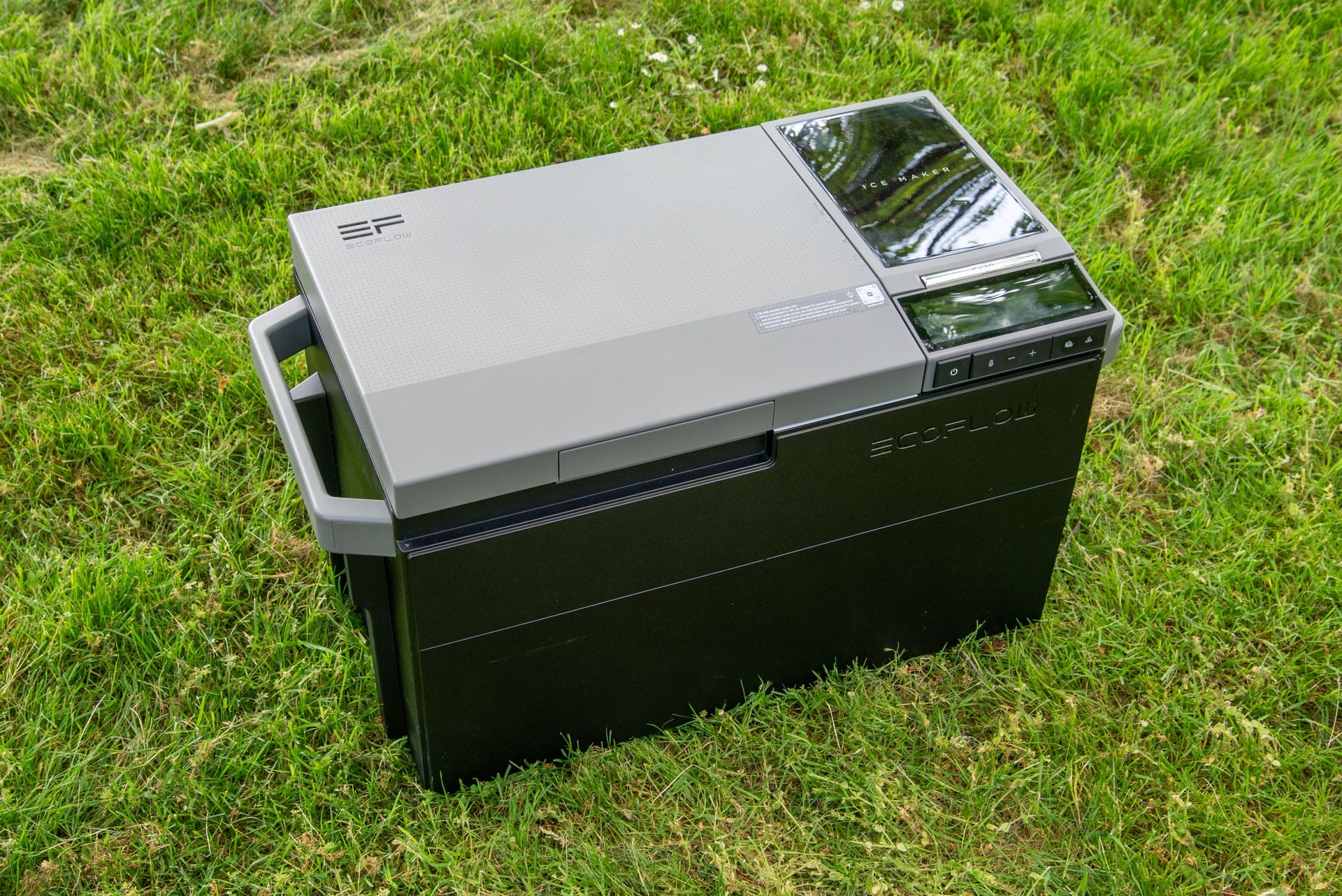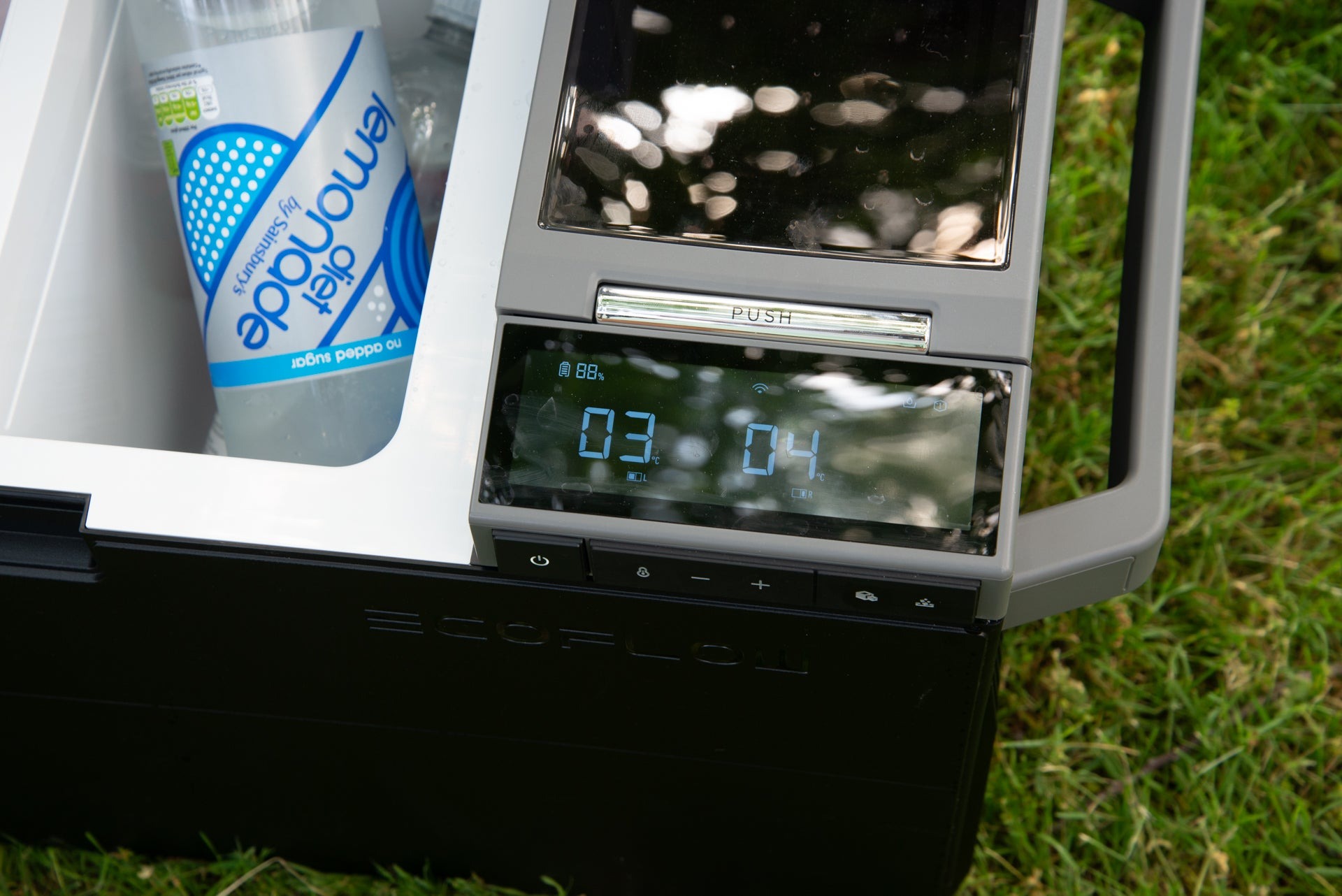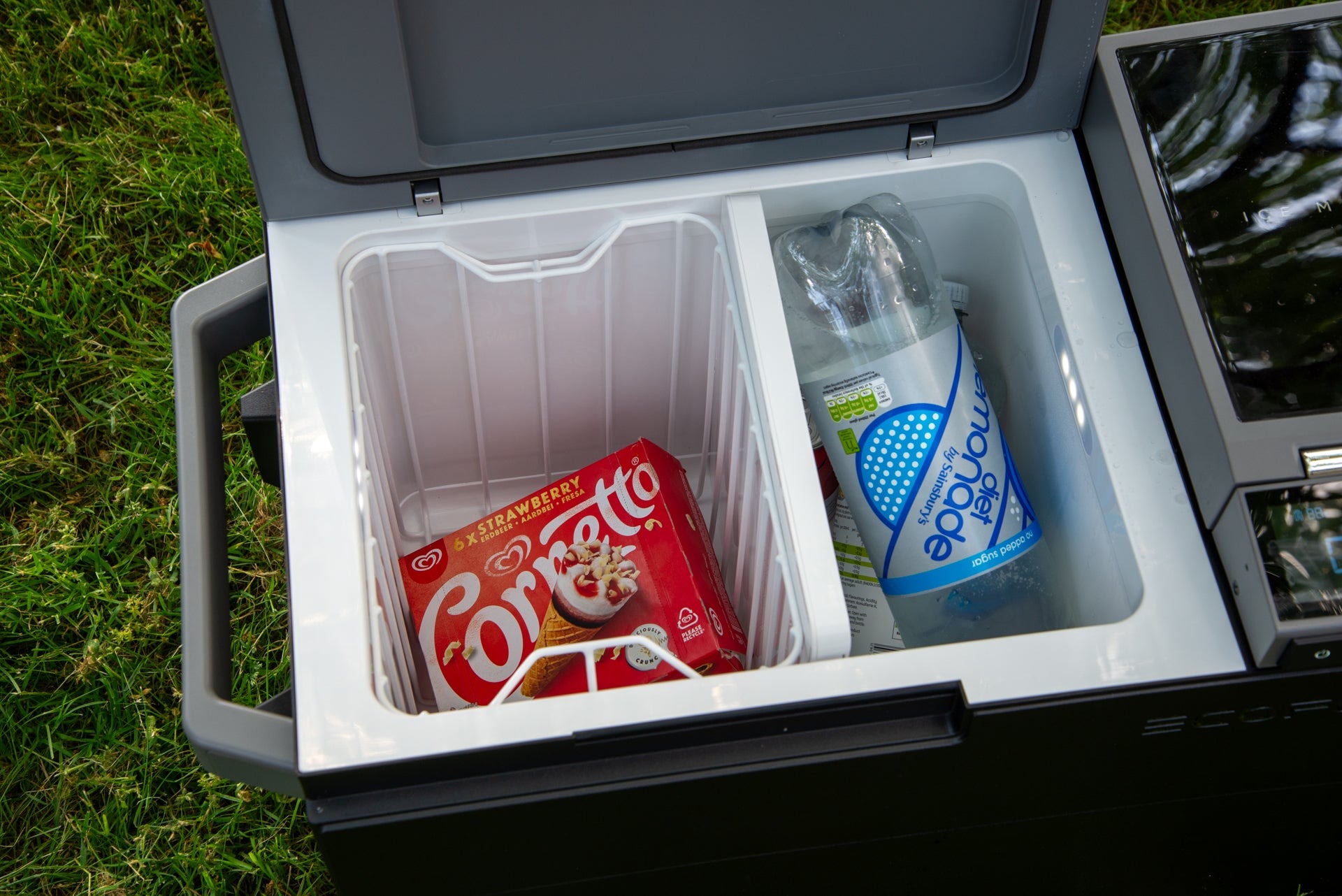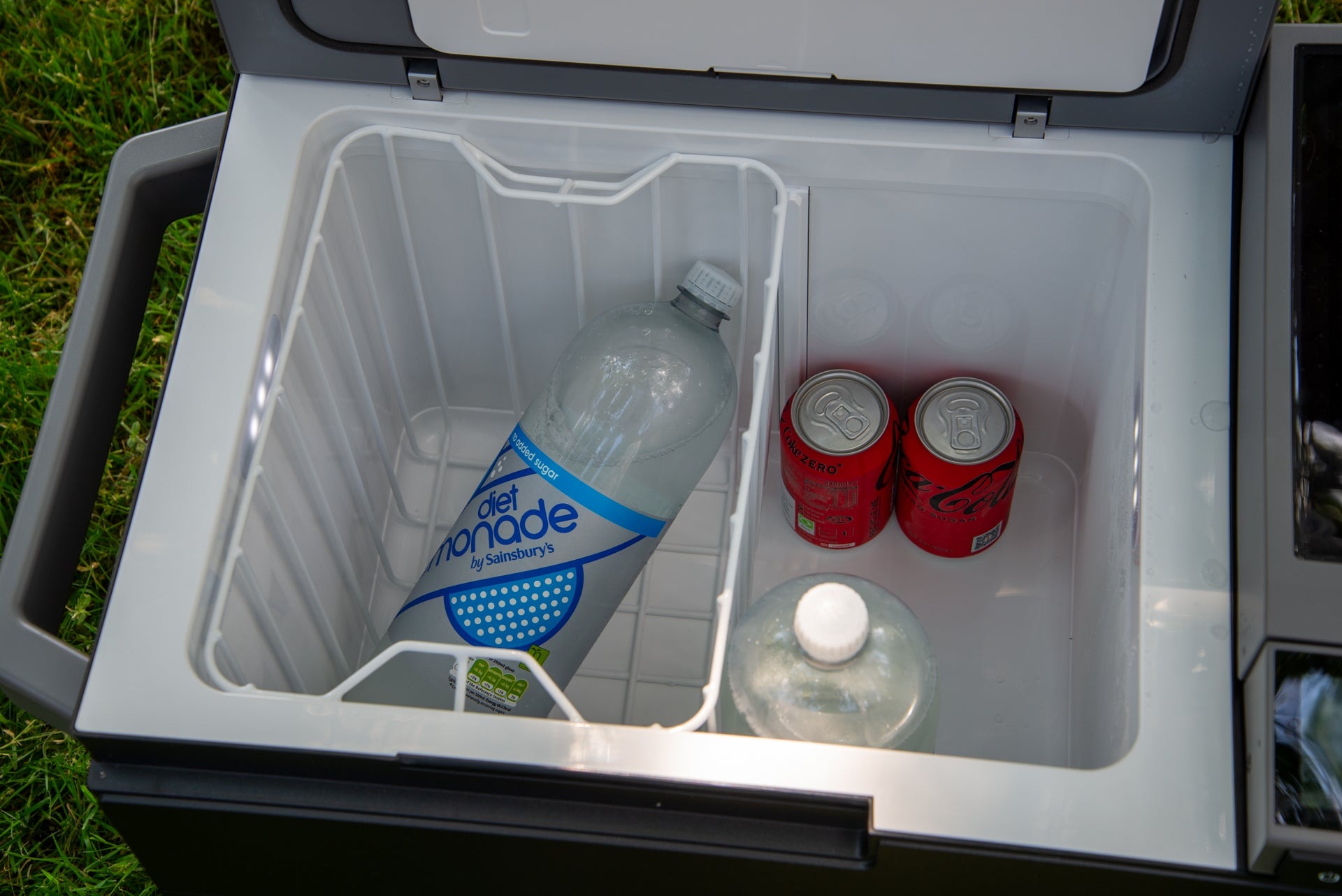Imagine saying goodbye to soggy coolers and melting ice forever. Enter the era of portable chillers, sleek and silent champions of temperature control that keep your food and drinks perfectly preserved – or even heated – without relying on dwindling ice supplies.
If you are looking for a portable freezer to store large quantities of food or drinks, you should check out this review.
Whether you’re a sun-seeking beach bum, a trail-blazing backpacker, or simply someone who values convenience on the go, these innovative marvels offer a game-changing solution for any outdoor or indoor setting. But navigating the diverse landscape of portable chillers can be a daunting task. Fear not, this guide is here to illuminate your path towards the perfect chilled partner.
Chill Champions: Thermoelectric vs. Compressor Models
Two main contenders dominate the electric chiller arena: thermoelectric and compressor models. Each reigns supreme in its own domain, so understanding their key differences is crucial to making an informed decision:
Thermoelectric Cooler
- Chill Factor: Utilizing the Peltier effect, these efficient units maintain cool temperatures, typically 30-40°F (17-4°C) below ambient. Perfect for day trips, picnics, or short outings where freezing isn’t necessary.
- Portability: Lightweight and compact, they’re ideal for ventures where every pound counts. Think picnics in the park or day hikes in the hills.
- Energy Efficiency: These quiet operators consume less power than their compressor counterparts, drawing energy from car outlets, portable power banks, or even USB ports.
- Versatility: Some models offer dual functionality, switching between cooling and heating modes to keep your food cozy on chilly days.
- Budget-Friendly: Generally, thermoelectric coffers are lighter on your wallet than their compressor counterparts.

Compressor Cooler
- Chill Master: Unmatched in their chilling power, these units replicate the performance of a mini fridge. Temperatures plummet as low as -4°F (-20°C), ideal for freezing food and drinks, making ice, and ensuring optimal food safety on extended trips.
- Built to Last: Robust compressors and sturdy insulation make them resistant to rugged outdoor conditions and heavy use. Perfect for camping expeditions or road trips with a full load.
- Capacity King: Available in various sizes, they accommodate everything from weekend supplies to family feast ingredients. No more fighting for chilled space!
- Tech Savvy: Many models boast advanced features like digital temperature control, battery monitoring, and app connectivity, for precise control and real-time insights.
- Premium Choice: The complex technology and robust construction come at a higher price tag compared to thermoelectric models.

You may also like: 12 Best Portable 12V Refrigerators (Comparison & Reviews)
Beyond the Binary: Hybrid and Absorbent Coffers
While thermoelectric and compressor coffers dominate the market, two other technologies deserve a mention:
Hybrid Coffers
Combining both technologies, these offer the best of both worlds, reaching freezing temperatures while maintaining portability and energy efficiency. Ideal for those who demand top-tier performance without sacrificing ease of use.
Absorbent Coffers
Utilizing crystals that retain coldness for extended periods, these coffers rely on pre-chilled water or ice packs. Environmentally friendly, quiet, and affordable, they are perfect for short excursions where pre-freezing is feasible.

Check this comparison table to find out the main features in detail and choose the most suitable type of portable electric coolers for your needs:
You may also like: 9 Best Portable Hydrogen Water Bottles (Comparison & Reviews)
Choosing Your Chilled Champion: Finding the Perfect Fit
Selecting the ideal portable chiller requires careful consideration of your specific needs and priorities. Here are some key factors to ponder:
- Adventure Awaits: Are you planning short jaunts or epic expeditions? Do you need freezing capabilities for meats and seafood, or just want to keep drinks refreshingly chilled?
- Size Matters: Choose a unit that accommodates your typical needs, leaving room for expansion to avoid overcrowding and compromised cooling efficiency.
- Power Play: Consider your access to power outlets, car chargers, or portable power banks when choosing a coffer’s power compatibility.
- Portability Puzzle: If carrying weight is a concern, thermoelectric units or smaller compressor models might be the better fit.
- Budget Balancing: Set a realistic budget and compare features within your price range. Remember, premium models with advanced features come at a steeper cost.
- Bonus Bonanza: Look out for features like digital displays, dual compartments, LED lighting, and USB charging ports when comparing different models.

You may also like: 13 Best Portable Air Ionizers (Under $100, $200)
FAQs about portable electric coolers
Can I run my chiller all night in my car?
Yes, most portable chillers are designed for continuous operation when plugged into a reliable power source like a car outlet.
How long will a cooler stay cold without power?
The duration depends on the coffer’s insulation quality and ambient temperature. Some compressor models can hold their temperature for several hours even unplugged, while thermoelectric units generally lose coolness more rapidly.
What type of battery can I use?
Many models are compatible with standard 12-volt rechargeable batteries, while others utilize internal lithium-ion batteries. Check the manufacturer’s instructions for specific recommendations.
Can I use solar panels to power my device?
Yes, several brands offer chillers compatible with portable solar panels, allowing you to recharge the battery and maintain chilling even off-grid.
How do I clean and maintain my electric cooler?
Regular cleaning is crucial to prevent mold and mildew growth. Disconnect the power source, remove any food or spills, and wipe down the interior with a mild soap solution. Allow it to dry completely before storing.
What are the environmental considerations?
Choose energy-efficient models, utilize solar power when possible, and dispose of old chillers responsibly to minimize your environmental impact.